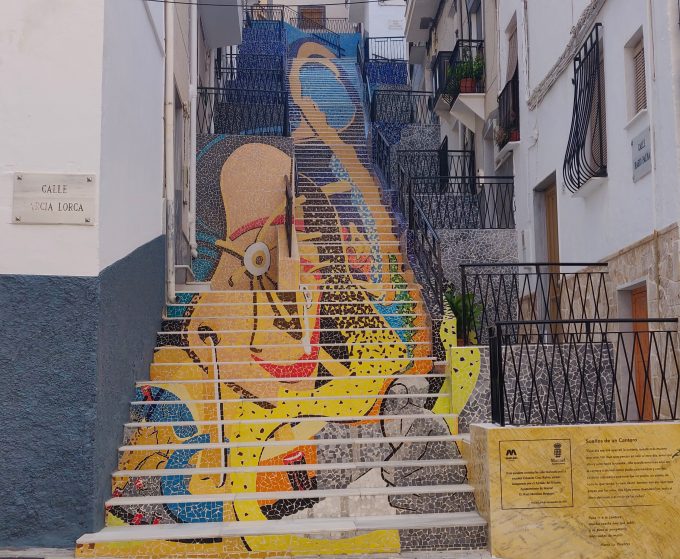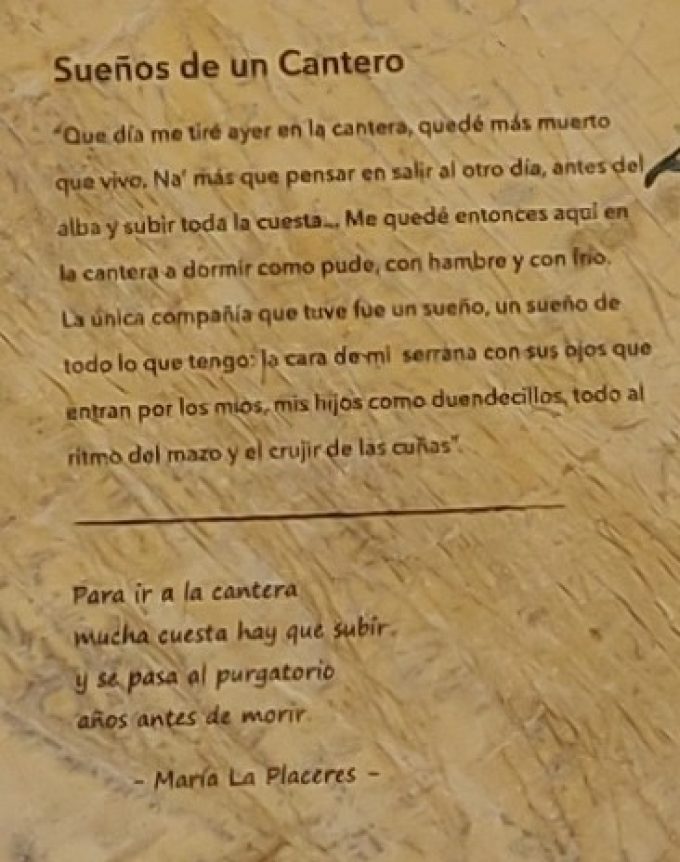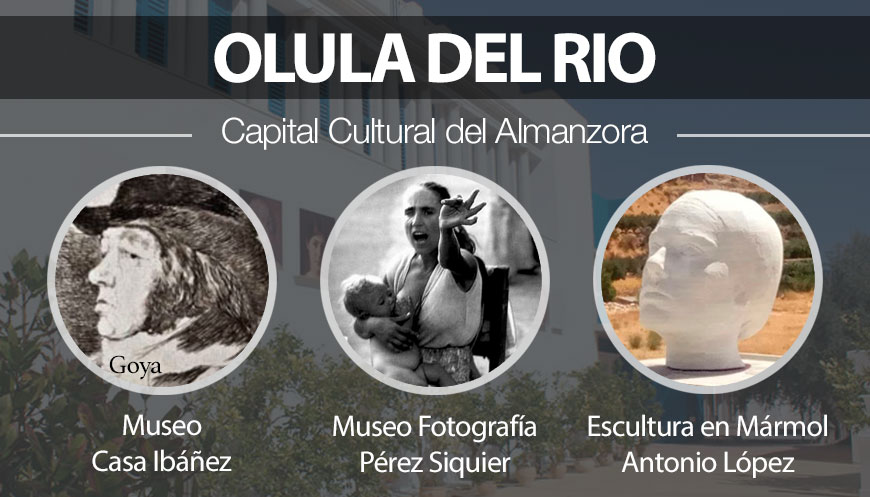Sueños de un Cantero can be considered as the culminating work of the sculptor Eduardo Cruz. The theme and elements of the work evoke the roots and the cycle of his personal and artistic life, which began in Macael, and returned to Macael.
Eduardo Cruz Rubio was born in Macael, on August 17, 1931, into a family of stonemasons. From a very young age he learned the secrets of marble from his father. At the age of 11 he worked as an apprentice in Luis el Canela’s workshop. During adolescence, the restlessness to carry out a creative activity begins to awaken in him. In those years, its references were artisans from the region such as Pepe el Turronero and Juan el Polillo. In 1949, the economic situation made him emigrate, with his whole family, to Argentina. In Mar de Plata he began to work in a well-known marble workshop and to frequent artistic and intellectual circles in the country, attending the Pascuala Mugaburu School of Fine Arts and the Rogelio Yrutia School of Crafts. On weekends he enters the world of sculpture through his first teacher, José Alonso. His expertise causes that in 1956 he begins to teach modeling classes at the school of crafts, mentioned above. Through the Círculo de Jovenes Mar del Plata, he relates to important artists of the time such as Jorge Hugo Román, Ricardo Dragó, and Libero Badii, participating in various exhibitions. This first stage is stylistically characterized by academic figurativism. In 1960 he returned to Spain, where he met the avant-garde sculptor Ángel Ferrant, who was able to help him evolve towards a more modern artistic conception. Back in Argentina, he meets Libero Badii, one of the most renowned Argentine sculptors of the second half of the 20th century, who became his second great teacher, and in whose house he meets other outstanding figures in the Argentine cultural field such as Jorge Luis Borges and the sculptor Aroldo Lewy.In 1964, for his work “Celtíbera”, he received the award for foreigners, in the sculpture section, at the National Salon of Plastic Arts. At this time his facet as a cartoonist is also revealed. In this second period he assimilates analytical cubism, stereometrically analyzes natural forms and represents them smoothly and angularly. In 1970 he moved to Los Angeles, USA, where he settled. There, he came into contact with Hollywood stars such as Kenny Rogers, Carol Burnet, Steve McQueen, Linda Evans, Jane Fonda, Aaron Spelling, Woody Allen, and Charlton Heston, for whom he created custom-made crafts. He also does large sculptures and decorative reliefs for Las Vegas hotels, and restoration work for the J. Paul GettyMuseum, the Los Angeles County Museum of Art, and the Santa Barbara Museum.
As of 1993, he abandoned his artisanal activity and dedicated himself exclusively to sculpture and drawing, thus opening a third era, of maturity, in which emptiness predominates over fullness, where the interior space has supplanted the external space in importance, with a growing interest in the use of color and textures. He resumes his literary activity with a series of short stories set in Macael and writings of a poetic nature. In 1998 he returned to Spain definitively, establishing his residence in Macael. His iconographic themes are recurrent: goblins, priests, birds, fish, women, cante jondo, but they differ conceptually. Although for the drawings he uses a symbolic formal figuration, of expressionist aesthetics, for the sculptural works he uses a simpler formal conception, with forms close to abstraction rather than purely abstract.
Here, in “Sueños de un Cantero”, Eduardo Cruz assembles elements of drawing and sculpture, precedent from his beginnings to elements of works of his maturity, evoking a scene known by the old stonemasons of Macael: the dream of that stonemason who has to warm as he can a night in the quarry, and dreams of images, feelings and sounds that surround his existence as a stonemason and macaelero.






Comments 0